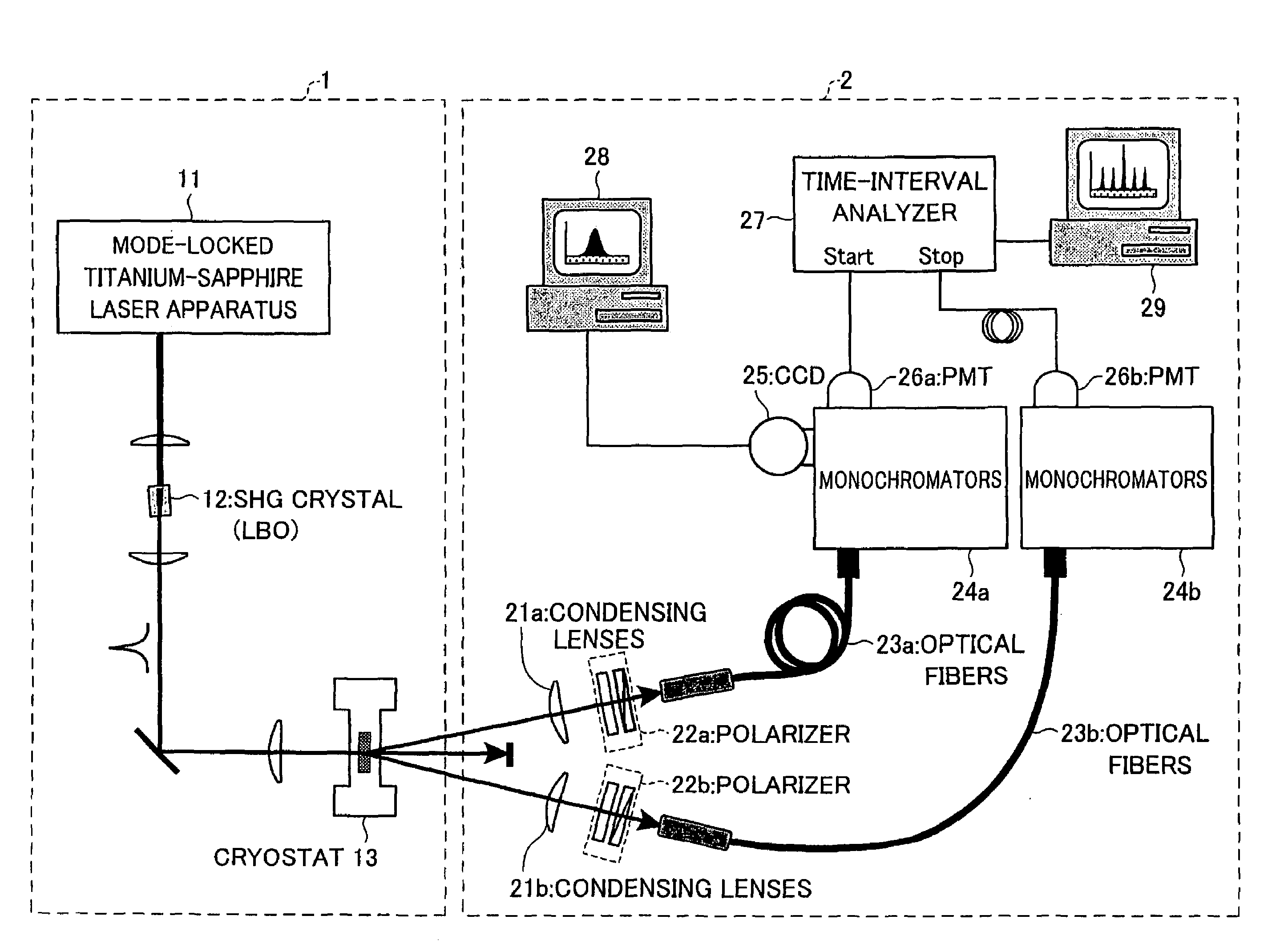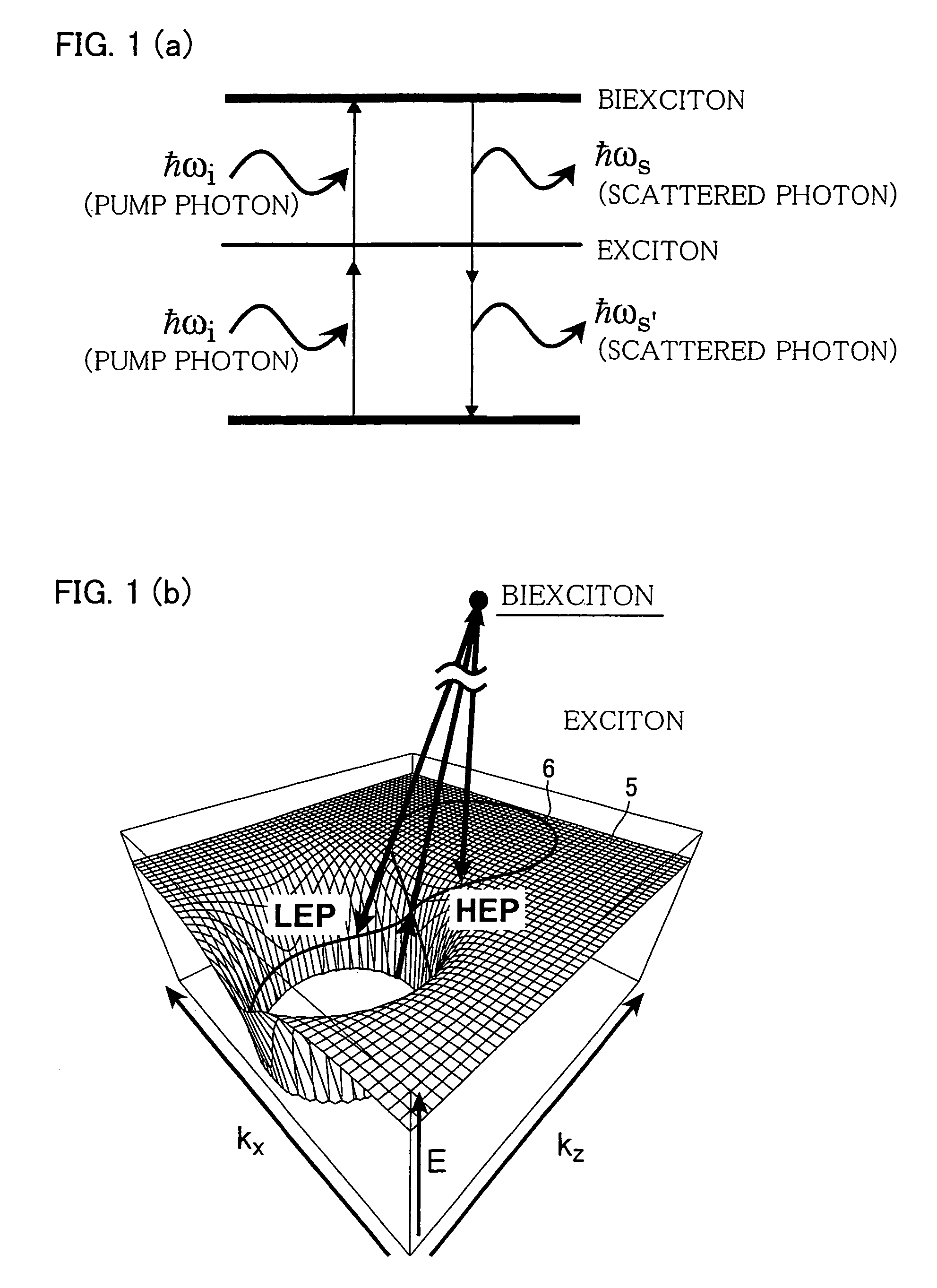Method for generating quantum-entangled photon pairs
a quantum entanglement and photon pair technology, applied in the direction of optical resonator shape and construction, instruments, optics, etc., can solve the problems of difficult to make fabrication finer than the order of light wavelength, physical impossible to wiretapping by quantum cryptography, difficult to replicate particles, etc., to achieve easy production of a pair of photons, improve spatial resolution, finer fabrication
- Summary
- Abstract
- Description
- Claims
- Application Information
AI Technical Summary
Benefits of technology
Problems solved by technology
Method used
Image
Examples
Embodiment Construction
[0030]The present invention is a method for generating quantum-entangled photon pairs by utilizing resonant hyper parametric scattering in resonance to biexciton (a combination of two exciton) in a semiconductor crystal, the photon pairs being quantum-entangled in terms of energy (frequency), momentum (frequency vector) and polarization.
[0031]Firstly, hyper parametric scattering (Resonant Hyper Parametric Scattering: hereinafter RHPS) through which photon pairs are generated is explained.
[0032]FIG. 1(a) is a view schematically illustrating an energy state in RHPS process. Two pump photons (parent photons) having an angular frequency ωi are radiated on a sample to induce two-photon resonance thereby to generate biexciton. The biexciton thus generated undergoes third-order non-linear optical process by which the biexciton is split into two photons (polaritons) without relaxation. Thereby, the photons are scattered as photon pairs having angular frequencies (ωs, ωs′), which are substan...
PUM
| Property | Measurement | Unit |
|---|---|---|
| time interval analyzer | aaaaa | aaaaa |
| band gap | aaaaa | aaaaa |
| binding energy | aaaaa | aaaaa |
Abstract
Description
Claims
Application Information
 Login to View More
Login to View More - R&D
- Intellectual Property
- Life Sciences
- Materials
- Tech Scout
- Unparalleled Data Quality
- Higher Quality Content
- 60% Fewer Hallucinations
Browse by: Latest US Patents, China's latest patents, Technical Efficacy Thesaurus, Application Domain, Technology Topic, Popular Technical Reports.
© 2025 PatSnap. All rights reserved.Legal|Privacy policy|Modern Slavery Act Transparency Statement|Sitemap|About US| Contact US: help@patsnap.com



